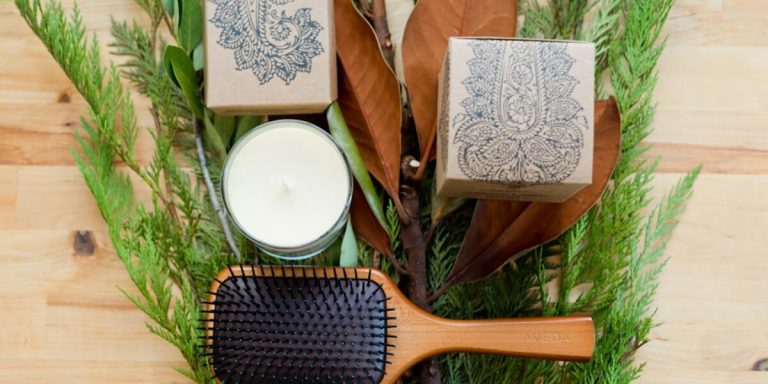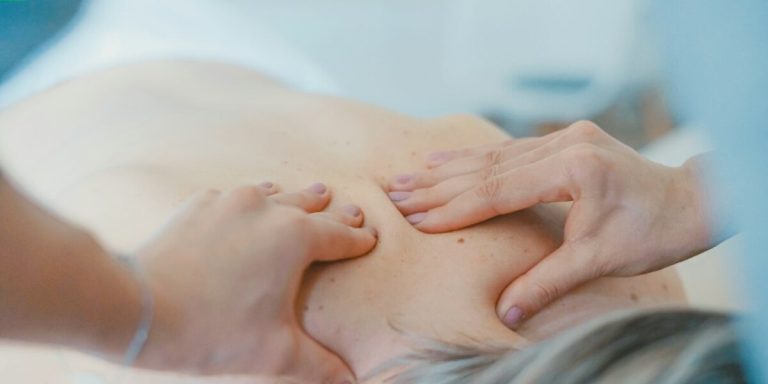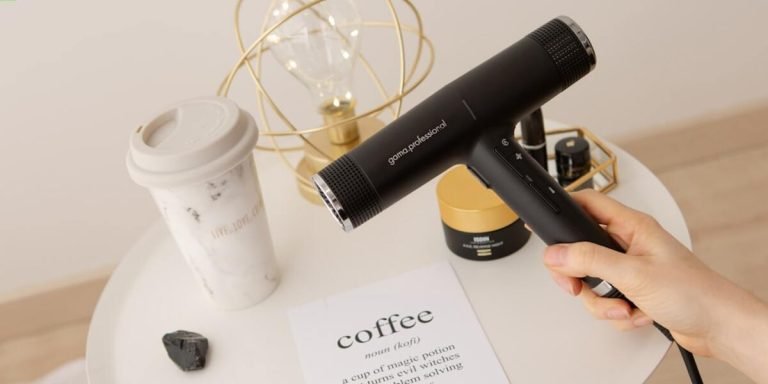Black Hair Dye Health Risks: Unveiling the Hidden Truths
Black hair dye poses health risks that often go unnoticed in your beauty regimen. Wanting to experiment with looks and follow trends can sometimes cause you to overlook potential dangers. Consider allergic reactions and severe long-term consequences when uncovering these hidden truths.
Let’s explore the implications of using black hair dye, focusing on aesthetic appeal and Hair Health. In this blog post, we will examine the impact of black hair dye on healthy locks using scientific evidence and expert advice. Join us for an enlightening journey to discover what lies behind the vibrant glossy strands after a color treatment.
Did you know?
Did you know that some black hair dyes contain a chemical called para-phenylenediamine (PPD), which can cause serious allergic reactions and has been linked to health concerns like asthma and non-Hodgkin’s lymphoma?
Understanding Black Hair Dye: Composition and Health Risks
The widespread use of black hair dye is undeniable today. People’s growing fascination with this glamorous and bold shade has skyrocketed. However, many are surprised to learn that the inky charm conceals potential health risks not widely discussed or known by consumers.
Black hair dye essentially consists of two components:
- An alkalizing agent that allows color to penetrate the hair shaft
- Synthetic colorants, most commonly paraphenylenediamine (PPD), which provide the desirable deep-black hue.
Equally concerning is recent research associating long-term exposure to such strong chemicals with higher probabilities for certain types of cancers like non-Hodgkin lymphoma and multiple myelomas though concrete evidential support remains limited at present-day 2023.
Therefore, choice rests within our hands –unfaltering beauty allurement guaranteed but potentially accompanied by undesirable ramifications should we choose ignorance over knowledge regarding what seeps beneath our scalp whilst adorning ourselves with captivating crowns dyed rich ebony hues?
The Chemical Makeup of Black Hair Dyes and Potential Toxins
Black hair dye, like any other hair coloring product, owes its effectiveness to a variety of chemicals. Understanding these components is key in grasping why the continual use may present potential black hair dye health risks.
Firstly, many dyes contain an ingredient called paraphenylenediamine (PPD), especially darker ones such as black. PPD provides deep, rich coloration and helps dyes last longer. However, it can cause allergic reactions and dermatitis in sensitive individuals.
Common culprits such as ammonia and peroxide play key roles in the dyeing process:
- Ammonia opens up the cuticle layer, allowing dye molecules to penetrate easily into your hair’s cortex.
- Peroxide acts as a developer, oxidizing those molecules for deeper pigmentation within each strand, resulting in permanent color change.
However, these strong agents can cause damage over time:
- They may lead to brittle strands.
- They can cause scalp burn if mishandled.
Resorcinol tends to contribute heavily too when we’re discussing black hair dye health risks.It not only aids binding colors but also creates permanency by making them less washable- sadly at cost of being associated with disrupting normal endocrine functionality .
Linking Hair Color to Health: Scientific Insights on Risks
In recent years, the popularity of black hair dye has skyrocketed globally. With its rising prevalence, concerns regarding “black hair dye health risks” have come to light as well. Understanding these potential dangers orbit around two key areas – composition and impact on overall hair health.
- Ammonia, which opens up the cuticle layer to aid in color penetration
- Peroxide, which degrades melanin to lock in the coloring effect for longer durations
- p-Phenylenediamine (PPD), which imparts a dark shade
- Resorcinol
Consistent exposure to such ingredients can severely compromise both scalp integrity and follicular strength over time.
1) Scalp irritation: The corrosive nature of ammonia may cause dryness or itching after repeated use.
2) Allergic reactions: PPD is known for triggering severe allergic responses including rashes or swelling among susceptible individuals.
3) Hair breakage: Frequent usage might leave your tresses brittle due to dehydration induced by peroxide elements in the formula.
4) Discoloration risk: There’s also an inevitable danger that constant re-coloring could lead toward uneven shading patterns overtime undermining aesthetic value beyond just posing wellness hazards.
To limit these adverse effects without completely giving up on dying desires:
Safeguarding Scalp and Follicle Wellness Against Harsh Dyes
In the pursuit of a striking new look, countless individuals opt for dyeing their hair jet black. While this alternative may initially bring about heightened self-confidence and charm, it is paramount to be aware of the potential health hazards associated with harsh hair dyes.
Let’s examine the damage synthetic black hair dyes can cause to our hair. Hair follicles anchor each strand and supply vital nutrients for healthy growth. Repeated or extensive exposure to chemicals in these dyes can significantly harm the scalp and follicles, weakening the structure and potentially causing premature hair loss.
The urge towards transforming one’s appearance through stark colors should not supersede prioritizing good health practices but balance them by choosing milder alternatives or implementing protective measures during usage which we will shed light upon further down in this article.
Identifying Signs of Negative Reactions to Black Hair Dye
While black hair dyes can provide a bold and striking appearance, the potential health risks associated with them cannot be ignored. It’s crucial to understand how these products interact with your scalp and follicles so you can enjoy your stylish look without compromising on hair health.
Observe any changes in the overall condition of your scalp after applying hair dye. Do not dismiss itching, burning, or tingling sensations as “normal,” as they often indicate an allergic reaction to chemicals in the hair dye. Discontinue use immediately if you experience such discomfort.
If you notice redness or inflammation around the dyed areas, this could signify irritation from harsh substances in certain dyes. Prolonged use can cause serious conditions like contact dermatitis, which harm scalp health and impair follicle function.
Strategies for Minimizing Damage from Regular Use
Keeping your hair color vibrant and glossy shouldn’t mean compromising on the wellness of your scalp and follicles. Especially when dealing with black hair dye, certain health risks need to be considered. Here are some strategies to mitigate damage from regular use.
Harsh chemicals in black hair dye can irritate or cause allergic reactions—a key argument for minimal usage. If you often change your hair color or need frequent root touch-ups, it’s crucial to understand how to protect your tresses.
Firstly, always perform an allergy test before applying any new product onto your entire scalp. Apply a small amount behind the ear or inner arm and wait for 48 hours. If there’s no sign of redness or irritation during this period, it should be safe to proceed with coloring.
Alternative Solutions: Safer Paths to Achieving Dark Tresses
In our journey to maintain optimal hair health, we must understand the potential health risks of black hair dye. Achieving a glossy, dark look may be appealing, but it’s essential to recognize the dangers posed by harmful chemicals in many commercial black hair dyes. Substances such as ammonia, PPD (Paraphenylenediamine), and heavy metals like lead or mercury often do more harm than good.
Consider switching from synthetic-based products to nature-derived ones for safer ways to get dark hair. Try options like henna and indigo, which are famous worldwide for their organic depigmenting properties and cause minimal damage to your hair.
Embrace a healthier lifestyle to strengthen your hair naturally. This should include:
- Eating a balanced diet.
- Maintaining a regular scalp care routine with essential oils and vitamins.
These habits contribute to your hair’s natural wellness and can increase pigment production, enhancing your hair’s hues without synthetic interventions.
Remember, safeguarding your intrinsic beauty does not have entail compromises when considering safety versus style quotient anymore in 2023!
Exploring Natural Dyes as Healthy Options for Black Hair
The first stop on our exploration of healthier options is henna. Henna has been used for centuries by different cultures due to its coloring effects and conditioning properties. It’s an excellent option if you want not just black hues but also rich reds or browns.
Next up on our list is Indigo powder which is commonly mixed with henna to create darker shades like chestnut brown and jet black while adding sheen and thickness at the same time.
Another great alternative that should be considered is Black Walnut hulls; they’re known for their ability to deliver deep, dark color tones naturally. Simply boil them down into a concentrated mixture which can then act as an effective rinse after shampooing.
Natural dyes don’t offer permanent solutions as commercial ones do – however this presents us with continuous opportunities for hair nourishment when regularly reapplying these homemade mixtures over time-hence promoting overall better hair health!
Sidestepping the chemical cocktail in conventional dyes offers one clear advantage. It drastically reduces scalp irritation or damage from harsh synthetic chemicals in commercial products. Always conduct patch tests before using natural alternatives to ensure safety from allergic reactions that excitement over a new application might overshadow.
Breakthroughs in Hypoallergenic and Organic Hair Coloring Products
The advent of hypoallergenic and organic hair coloring products is a significant breakthrough in minimizing black hair dye health risks. These safer alternatives to conventional dyes are reshaping the narrative around achieving dark tresses without compromising your overall hair health.
Hypoallergenic products offer great advancements for people with sensitive skin or allergies. These products typically:
- Contain fewer chemicals
- Have less harsh additives
These features reduce the risk of reactions such as itchiness, redness, or scalp burns. Additionally, specially formulated dyes are an excellent option for those prone to allergic reactions from regular black hair dye.
Natural-based formulations are also gentle on the scalp and promote healthier strands. These environmentally friendly components deliver nourishing properties into each strand during application, making them significantly less damaging than other types available in the market today.
Conclusion
In the grand tapestry of hair care, black hair dye health risks are a thread we can’t afford to ignore. With everything from allergic reactions to hormonal imbalance on the table, it’s clear that an informed decision is not just smart—it’s essential for maintaining overall wellbeing.
To better understand hair health practices, avoid making this your last resource. Dive deeper into our website to gain vital insights about Hair Health. You deserve the best care for your precious locks!







